Nokia N8 Review: Nokia's New Flagship
by Mithun Chandrasekhar on January 12, 2011 1:00 AM EST- Posted in
- Smartphones
- Nokia
- N8
- Symbian
- Mobile
HTPC in your pocket?
So while the GPU in the N8 is competent, the display it drives is quite up to the task itself. Nokia is making use of a 3.5” AMOLED panel, running a resolution of 640x360 pixels. While certainly not the highest in terms of pixel density, it is vibrant and crisp with good contrast. The AMOLED panel on the N8 is very good and surprisingly, it actually uses a regular RGB sub-pixel grid, unlike the Pentile configuration found in most other AMOLED displays. This makes the display, in general, sharper than other AMOLED’s, especially when viewing text.
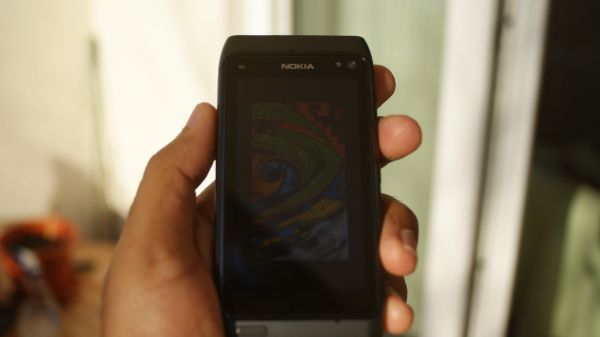
N8’s visibility outside is decent (left), but nothing great.
It has very good visibility indoors and decent visibility outdoors—especially for being an AMOLED display—but still isn’t quite as good as some regular LCD displays. Even though the N8 is Nokia’s current flagship device, it doesn’t have the outdoor-visibility enhancing ‘Clear Black Display’ technology (aka polarizing filter). The ambient light sensor does its job very well and adjusts the brightness within a second or two of change in the lighting conditions. It also does a good job of maxing-out the brightness when outdoors under sunlight, although it doesn’t seem to want to dip to the other end when in complete darkness.
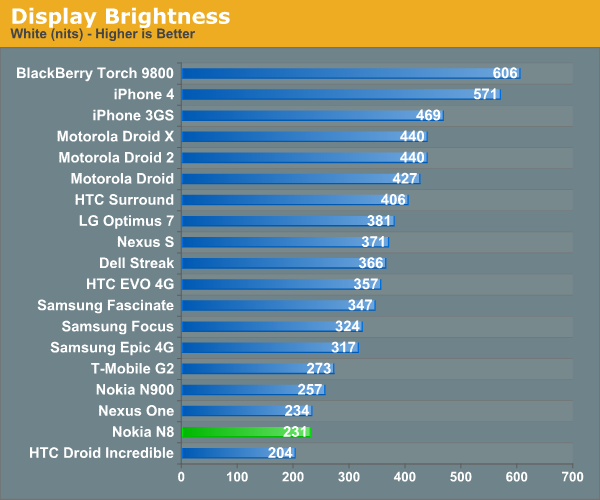
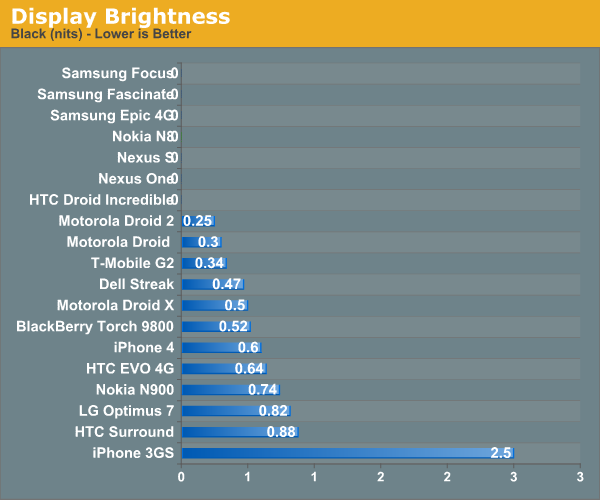
The N8 excels as a camera and as a phone. But another area where it does quite well for itself is multimedia. There is another first for the N8; it is the first mobile device to sport a complete implementation of the Dolby Digital Plus standard. What this means is that the N8 is capable of streaming out 5.1 audio without any issues.
Video playback on the Nokia N8
The N8 also houses a v1.3a-spec mini HDMI connector (Dolby Digital Plus needs at least a v1.3 connection) up top that works just as it should. Connect the N8 to your TV using the included cable and you’re all set. And Nokia has paid a lot of attention to its implementation of HDMI-out on the N8. Instead of simply mirroring or cloning the N8’s display over the HDMI connection as most phones do, Nokia has implemented what it calls a “native” mode, wherein during media playback, the on-screen controls are the only thing that is displayed on the N8. The actual image/video stream is only visible on the HDTV and it is unobstructed by the playback controls. While it doesn’t really change how you would watch videos or images per se, it just goes to show the level of detail Nokia has gone into while implementing seemingly inconspicuous features.
The N8 also supports Matroska and DiVX playback out-of-the box without having to download, install or configure anything. I threw a couple of 720p DiVX trailers at it and it played them without issues. I did have some trouble with a couple of MKV’s encoded using “high-profile” (even though the specs say it supports it), and a few high-bit rate videos (I think around 10Mbit/sec is the usable limit) where I would only get the audio stream playing, as the N8 could not identify the video stream. But it was awesome to just drop stuff off onto the N8 and watch it go. If I found one issue with the video player on the N8, it has to be its inability to resume playback from where it left off; whether this means you explicitly press pause and close the video player or just directly switch over to another app, the N8 starts playing back the video from the very start every time.

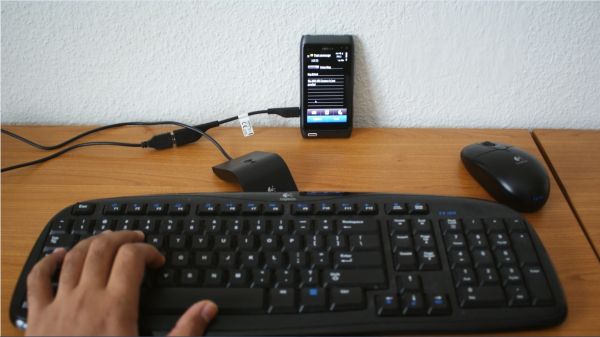
The N8’s excellent media handling coupled with USB OTG make it a great basic ‘HTPC’
And speaking of go, the N8 is one of the few devices that supports the USB OTG (On-the-Go) standard which allows it to act as a USB host for certain devices. Once again, this works flawlessly. I copied a couple of ripped videos onto a USB drive, plugged it into the N8 (via the supplied USB to micro-USB dongle) and the N8 immediately picks up the drive as a mass-storage device and lets me browse its contents. Again, no need to install or configure anything. The only restriction here is that the drives must be FAT32 formatted, not NTFS. The N8 is capable of providing up to 200mA over its micro-USB port, but I could use externally powered devices (such as my 1TB external drive) without any issues. I tried using a bunch of devices such as USB flash drives, digital cameras and they all seem to work fine. But I had two portable drives that understandably didn’t work with the N8 because of power requirements; I could just hear them power up and down continuously.
Just out of curiosity, I tried connecting a Logitech EX100 wireless Keyboard+Mouse combo and it worked! I could use the mouse to navigate and interact with the menus without any fuss and in seconds I was typing out emails on the N8 through the keyboard. This really does make it a viable HTPC option. Nokia has also thrown in an FM radio (with the wired headset acting as an antenna) and the N8 can also act as an FM transmitter. While not entirely useful in this day and age where almost every vehicle comes with at least an AUX IN jack, it certainly is a nifty feature for those who don’t have any other means of streaming audio through their vehicles speaker setup. In my brief use of the N8 as an FM transmitter, it did quite well even in areas with multiple transmitting stations.
And Nokia has another bit of surprise here. The N8 comes with 16GB memory built-in that can be expanded using microSD cards, currently giving you a maximum storage capacity of 48GB. While a lot of phones currently available come with large amounts of storage memory, in my experience, I rarely ever end up using more than a couple of gigabytes simply because of the painfully slow transfer speeds. Not so with the N8. I have recorded sustained read speeds of 13MB/sec and write speeds of about 10MB/sec. This means I can transfer a 700MB video in a little over a minute. Have a look the numbers below for comparison.
| Device | Read (MB/s) | Write (MB/s) |
| Nokia N8-00 16GB | ~13 MB/s | ~10 MB/s |
| Palm Pre Plus 16GB | ~15 MB/s | 1.5 MB/s |
| ADATA C802 4GB | ~13 MB/s | ~4 MB/s |
I couldn’t get more specific information on the Toshiba THGBM1G7D4FBA13 MCP used part used in the Nokia N8, but it contains four 32Gbit Toshiba-Sandisk MLC NAND die along with a flash controller.









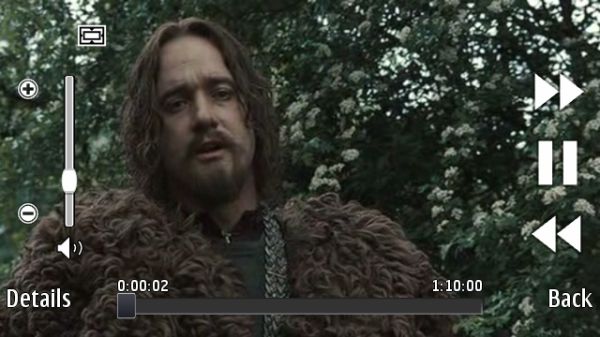
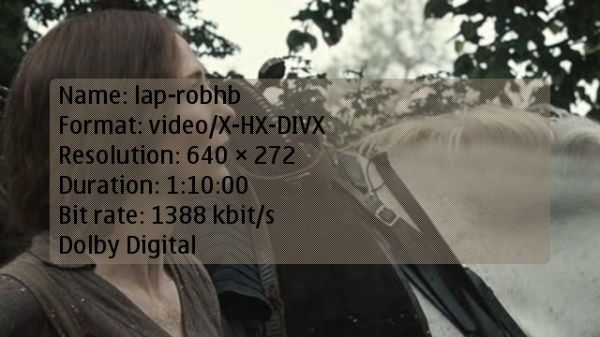
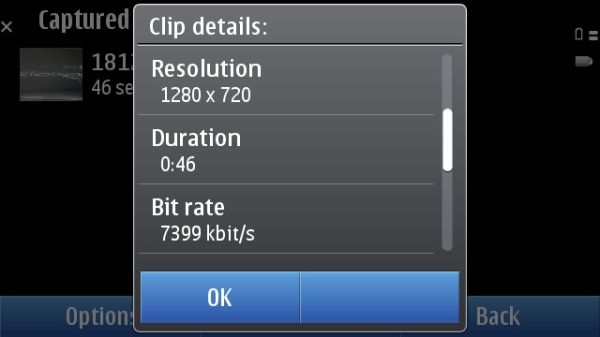
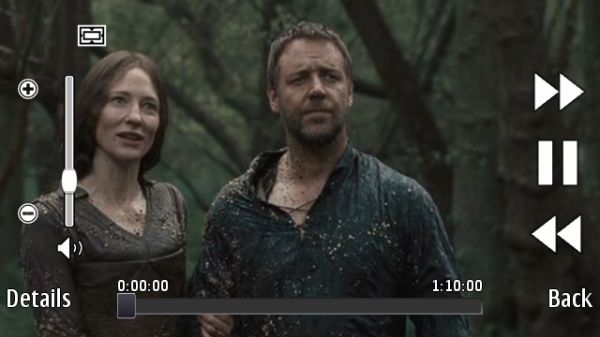








119 Comments
View All Comments
Voldenuit - Wednesday, January 12, 2011 - link
Hehe, my bad then! ^_^akse - Wednesday, January 12, 2011 - link
I'm guessing MeeGo at first will be mobile computers. Something like N900 with better phone software and features.Something very high end and special. But as things seems to evolve in direction where most smartphones are close to a mobile computer in coming years, Symbian3 will probably be adopted to all their phones that they call Smartphones and maybe cheaper mobile computers, while MeeGo being on the high end phones/mobile computers.
Nokia made the right decision to ditch Symbian^4 and decide to bring its updates as smaller updates to Symbian^3 devices.
I've been using N900 for a year now and it can do almost anything, but recently I've really been wanting to buy N8 because I want a phone, but with huge amount of other features. N900 is mostly a computer with phone :)
bigboxes - Wednesday, January 12, 2011 - link
I don't know about you, but my smartphone is a mobile computer. It's a computer first and a phone second. No need to wait for the future.Voldenuit - Wednesday, January 12, 2011 - link
PS, the N900 was capable of video calling on Skype, hopefully, the N8 will receive similar functionality soon.Exodite - Wednesday, January 12, 2011 - link
Discussion on the Skype forums promised an update to address S^3 compatibility issues before the end of last year (I don't know if that materialized or not) and a refresh bringing video calling support to S^3 devices later this year.That's a month or two ago though and if there's been further developments I don't know.
Meaker10 - Wednesday, January 12, 2011 - link
Sensor size in fractions of an inch? Lense size in mm?Why not just keep it all sane in mm?
Voldenuit - Wednesday, January 12, 2011 - link
That's how camera makers report their (compact) sensor sizes. Has to do with legacy TV tube conventions iirc.at0m - Wednesday, January 12, 2011 - link
great review, the n8 is not for everyone but it has it's fans ( me included ). it has plenty of apps, takes a great picture, has clean audio output and the bonus hdmi. not to mention ovimaps has turned into a great navigation tool. top that off with 3g on all carriers and it works for me. There are some updates right around the corner hopefully to help get the software more in line.. symbian isn't as flashy as android but it has quite a bit of maturity behind it with some more love to the UI it could be perfect.on the GPU it actually marks a return to a discrete GPU as opposed to the first instance. the n82 and n95 both had dedicated GPU's and dual core CPUs :)
Lapoki - Wednesday, January 12, 2011 - link
You really cant take Nokia love out of an Indian no matter where he lives in the world....just like cricket
mcjw - Wednesday, January 12, 2011 - link
I'm sorry but coming from Anandtech's N900/Droid review, this review is quite a let down.There is no technical information you cannot get from one or 2 press releases, and the entire article reads like a rehash of all the N8 customer reviews Amazon.com, scratching just the surface.
The only insight I might have gotten is where you mentioned the CPU. But there the language is vague, leaving me with even more questions: Samsung or TI processor? Your language make it sound like you are not sure.
So please, show a bit of expertise in your topic rather than writing out the obvious in running prose. Is this too much to expect from Anandtech?